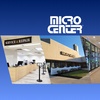{shortcode-54ee96d5191f3a89434ee49a776eb8128f0d58fa}
A team of Harvard researchers established an observatory on top of the Sphere, a giant immersive entertainment venue in Las Vegas, in order to detect signs of Unidentified Anomalous Phenomena, or mysterious objects in the sky.
The observatory in Las Vegas is the third site for the Galileo Project, an initiative led by Harvard Astrophysics professor Abraham “Avi” Loeb to search for the potential existence of non-human made objects near Earth. Loeb announced the project in late October while speaking as a guest on podcast the Joe Rogan Experience.
“Hopefully, we will use it for science education, for public outreach, once again, to show the public that science can be exciting,” Loeb said. “My hope is that we can engage the public also in the analysis of the data.”
The observatories — located in Las Vegas, Cambridge and Pennsylvania — use visible and infrared light cameras to continuously monitor the sky. Using the observations, researchers can triangulate detected objects, calculating metrics such as its velocity and acceleration. The team also uses machine learning tools to help identify and classify the detected objects.
“So that will be the real fun, what kind of objects we find there,” Loeb said. “Of course, we are looking for the anomalous objects, the outliers. Anything that is made by humans is boring as far as I’m concerned.”
The project began when two executives in the entertainment industry, including the CEO of the Sphere, visited Loeb in his home and offered the Sphere’s rooftop as the location for an observatory. According to Loeb, the pair was inspired by his 2024 TedTalk titled “My Search for Proof Aliens Exist.”
Loeb is most excited for the prospect of identifying UAPs because of its potential to change “the future of humanity.”
“My hope is that if we find evidence for extraterrestrial intelligence, that it will convince us to cooperate, because we are all members of the human species,” Loeb said.
“I hope it will bring humanity to a better place, because we will change our priorities,” he added. “Instead of investing $2.4 trillion every year in military budgets, we might invest a similar amount of money in space exploration once we realize that there are some gadgets that enter the solar system from outside.”
Even if the observatories do not identify anything other than human made technology, Loeb said the project will still be useful.
“The same sensors and software could be used for national security, so it will be helpful for the defense of the country in general,” Loeb said. “We are not wasting time in the sense of developing something that nobody would use.”
As of November, the observatory is operational and gathering data.
The research has garnered popular interest. Late last month, Alex Malycke, NASCAR racecar driver interested in Loeb’s work, featured Loeb and The Galileo Project logo on the hood of his car.
Loeb said that by communicating the scientific process to the public instead of just “what they need to know,” attracts people’s interest in research.
“I present it, not as a complete product that you just deliver to the public, but it’s the process of learning based on data, and in the fact that we don’t know in advance, and sometimes we make mistakes,” he said. “It’s like a detective story, as long as you enjoy the process of learning — and then the public seems to connect to that.”
—Staff writer Anna Shao can be reached at anna.shao@thecrimson.com.













